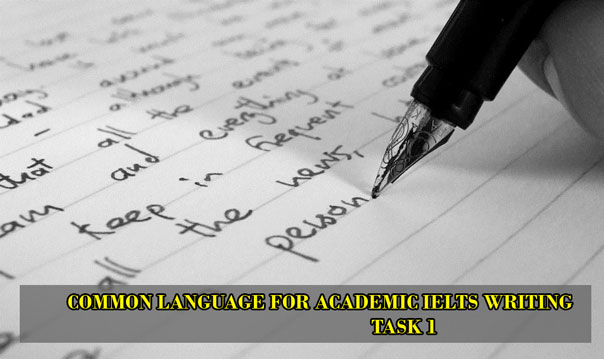Tips for IELTS Academy Writing Task 2
You don't have to be a writer to write a good essay. This task may look even harder than the report, but it is only a first impression. Just follow the rules, keep the right structure, use some "smart" words and practice a little. This way you can easily reach a level, where no matter what topic they give you, after 40 minutes you turn out a beautiful 2-page essay and walk out of the room with a huge smile on your face.
So let's do it together:
Example:
"Home schooling belongs to the past and is unacceptable in modem society. To what extent do you agree or disagree with this statement? Use your own knowledge and experience and support your arguments with examples and relevant evidence"
We can clearly see a hidden argument here. By revealing the real meaning of the topic we get "Is home schooling acceptable in modern society?" This way it becomes an "A" topic, an argument with 2 sides - for and against home education.
Example:
Let's say that after some thinking you came up with the following ideas, and your opinion is against education at home.
Now you should think about what goes where in your essay. On the same draft paper where you have written the ideas, group them and decide which paragraph will describe which idea. If the topic is an argument (type A), remember to put the side you don't agree with first and the side you do agree with second. Think about how to move from one paragraph to another. There should be a connective logical sentence that drives you towards the next paragraph's topic.
Example:
Important! Try to start body paragraphs with a linking word (like However, Therefore, Moreover, Nevertheless, etc.). It raises your score.
Example:
This is an essay written according to the ideas you came up with. The ideas are in bold font for easier understanding.
Everything has two sides and home schooling is not an exception. In the past it seemed like the most natural way of educating children, but today many people criticize it.
We must acknowledge that parents know their children best. That gives them a good chance of knowing how to make their child understand certain concepts. Using their child's interests, parents can make the process of learning more enjoyable and effective. In addition, being at home makes a child feel safe, which contributes to his ability to concentrate on studying.
Nevertheless, many people believe that teaching should be done by professionals.
There are many proven scientific approaches that produce good results and without those techniques, parents who teach their kids at home have no chance of success. Associative learning is a good example of such a technique. Showing the child images while learning the alphabet (apple for "a", boy for 10 makes him or her remember the letters faster and easier.
In addition, not every parent is capable of teaching his or her child at home because the blind cannot lead the blind. Parents cannot teach children something they don't know themselves, and let's face it - not all of us have a profound knowledge of history or geography even on a school textbook level. Eventually, even those mums and dads who succeeded at school could forget material with the passage of time.
In conclusion, I have more trust in the abilities and experience of professional teachers than I do in my own.
And finally – read the essay carefully from the beginning and check it for errors
Mọi thông tin chi tiết, các bạn vui lòng liên hệ:
DU HỌC UNIGLOBE
10/3 Nguyễn Thị Minh Khai, Phường Đa Kao, Quận 1, TP.HCM
ĐT: (08) 35 173 345 – 35 173 678
Email: info@uniglobe.edu.vn
Website: www.uniglobe.edu.vn
Structure
Every essay should have this exact structure: introduction, body and conclusion. It is very important because your grade is affected by it. The introduction usually takes one paragraph, the body - two or three paragraphs and the conclusion - one paragraph.Essay topics - 3 different kinds
There are only 3 kinds of essay topics in IELTS, let's call them A, H, S.- Topic type "A" presents an Argument and you need to explore pros and cons, reasons for and against, while you support only one side.
- Topic type "H" present a Hidden argument. These topics usually ask "To what extent ...?", "In what way...?", "How has something changed...?"
- Topic type "S" present a Situation and you need to explore reasons why it is what it is, assume what will happen in the future and suggest solutions to problems, if required.
- A: "Modern society benefits greatly from computer technology. However, becoming more dependent on computers has its disadvantages. Discuss the threats of computers." Here the 2 sides of the argument are the advantages and disadvantages of computers.
- H: "To what extent should television participate in our children's education?" What they really ask here is whether the television should educate the children or not.
- S: "As a result of changes in the role of women in modern society, men are now the ones suffering from sexual discrimination. Do you agree?" Here you can see the description of situation and you have to write what you think about it.
Essay of A(rgument) kind
- The introduction paragraph must clearly state the argument, both sides of it. Do not simply copy the topic from the instructions, write it in other words. Don't give your opinion, save it for later.
- Body paragraphs (at least 2) must refer to each side of the argument. Write the first paragraph about the side you disagree with. The side you do agree with should be in the last body paragraph, because this way it naturally leads to the conclusion.
- The conclusion paragraph should contain a summary of the points you were making. Never mind if the paragraph turns out to be short, the important thing is that you kept the structure of the essay.
Essay of H(idden Argument) kind
- The introduction paragraph must define the question. You need to reveal the hidden argument. Rewrite the topic, so it will say what it really means:
from "to what extent something affects...?" to "Does something affect...?"
from "in what way something contributes?" to "does something contribute?"
from "how does something influence...?" to "does something influence ...? Now it is an argument with two sides, and you write an essay of kind "A".
Essay of S(ituation) kind
- The introduction paragraph must state the situation and explain it. Don't give your opinion here.
- Body paragraphs (at least 2) should describe reasons that have led to the situation being like it is now. Each paragraph should talk about one reason.
- The conclusion paragraph should summarize the key points of the essay. If the task requires suggesting a solution to a problem, recommendations, advice - this is the place for it. If your opinion is required - you should also give it in the conclusion paragraph.
General suggestions
- Write on the given topic directly, don't slide to another theme.
- Write in general, not about your personal experiences, but about what is going on in the world.
- Read the task instructions and write about every little thing that is requested. If the task requires suggesting a solution - do it. Don't forget to give recommendations or advice, if requested.
Baby Steps through the essay
After you have read all that, you still have no idea how to start writing.So let's do it together:
First Steps:
Read and classify the question. You need to decide what kind of topic you have got, an A, H or S. It will affect the way you plan your essay.Example:
"Home schooling belongs to the past and is unacceptable in modem society. To what extent do you agree or disagree with this statement? Use your own knowledge and experience and support your arguments with examples and relevant evidence"
We can clearly see a hidden argument here. By revealing the real meaning of the topic we get "Is home schooling acceptable in modern society?" This way it becomes an "A" topic, an argument with 2 sides - for and against home education.
Second Steps:
Here you need to come up with ideas, thoughts and opinions on the given topic. The best way to do it is to think of some main ideas and then to write everything you can think of regarding those ideas. In case you are working on an essay of an "A" or "H" kind, you need to think about ideas for and against the topic. If you are working on an essay of kind "S" - you need to think about the reasons for the situation to be the way it is.Example:
Let's say that after some thinking you came up with the following ideas, and your opinion is against education at home.
|
For
• parents know their children• learning is more enjoyable • children feel safe |
Against
• no scientific approach (like associative learning)• not every parent is capable • parents forgot the material |
Now you should think about what goes where in your essay. On the same draft paper where you have written the ideas, group them and decide which paragraph will describe which idea. If the topic is an argument (type A), remember to put the side you don't agree with first and the side you do agree with second. Think about how to move from one paragraph to another. There should be a connective logical sentence that drives you towards the next paragraph's topic.
Example:
|
|
|
Third Steps:
It is time to write the answer. According to the plan you have made, start writing the essay. The first sentence of the introduction gives the main idea of the essay, either presenting sides of the argument or describing a situation. The last sentence of the introduction should naturally lead into the first paragraph of the body. Remember to keep the paragraph structure and to connect paragraphs so that one leads to another.Important! Try to start body paragraphs with a linking word (like However, Therefore, Moreover, Nevertheless, etc.). It raises your score.
Example:
This is an essay written according to the ideas you came up with. The ideas are in bold font for easier understanding.
Everything has two sides and home schooling is not an exception. In the past it seemed like the most natural way of educating children, but today many people criticize it.
We must acknowledge that parents know their children best. That gives them a good chance of knowing how to make their child understand certain concepts. Using their child's interests, parents can make the process of learning more enjoyable and effective. In addition, being at home makes a child feel safe, which contributes to his ability to concentrate on studying.
Nevertheless, many people believe that teaching should be done by professionals.
There are many proven scientific approaches that produce good results and without those techniques, parents who teach their kids at home have no chance of success. Associative learning is a good example of such a technique. Showing the child images while learning the alphabet (apple for "a", boy for 10 makes him or her remember the letters faster and easier.
In addition, not every parent is capable of teaching his or her child at home because the blind cannot lead the blind. Parents cannot teach children something they don't know themselves, and let's face it - not all of us have a profound knowledge of history or geography even on a school textbook level. Eventually, even those mums and dads who succeeded at school could forget material with the passage of time.
In conclusion, I have more trust in the abilities and experience of professional teachers than I do in my own.
And finally – read the essay carefully from the beginning and check it for errors
40 minutes? Not enough!
Hardly anyone can get their first essays done on time. So don't be disappointed if it takes you an hour or even longer. First try to get used to the Baby Steps process that I explained earlier. After a little bit of practice, you will start writing essays faster and faster, and finally you will reach your goal - an essay in 40 minutes. You should work with a clock all the time - this is the only way for you to monitor your progress.Helpful phrases:
Usually people who don't read and write in English every day have trouble expressing themselves in an essay. So I enclose here a list of phrases to help you write more elegant sentences.Phrases to show two sides of an argument
- "Some people prefer .... Those who disagree point out that..."
- "We must acknowledge ... Nevertheless, ..."
- "No one can deny ... However, ..."
- "Many people hold the opinion... Others, however, disagree..."
- "Although it is hard to compete with ..., some people still prefer ..."
- "Not only..., but..."
- "Also"
- "Furthermore,"
- "In addition,"
- "Moreover,"
Phrases to contrast with what was written before
- "Although..."
- "However,"
- "Nevertheless,"
- "Even if..."
- "In spite of
- "On the other hand"
Phrases for examples
- "For example,"
- "For instance,"
- "In particular,"
- "..., such as"
- "To illustrate ..."
Phrases for results
- "As a result"
- "Therefore"
- "Thus"
- "So"
- "Eventually"
Phrases for conclusion
- "Lastly,"
- "Finally,"
- "To conclude with,"
- "In short,"
- "In conclusion,"
Mọi thông tin chi tiết, các bạn vui lòng liên hệ:
DU HỌC UNIGLOBE
10/3 Nguyễn Thị Minh Khai, Phường Đa Kao, Quận 1, TP.HCM
ĐT: (08) 35 173 345 – 35 173 678
Email: info@uniglobe.edu.vn
Website: www.uniglobe.edu.vn






bình luận